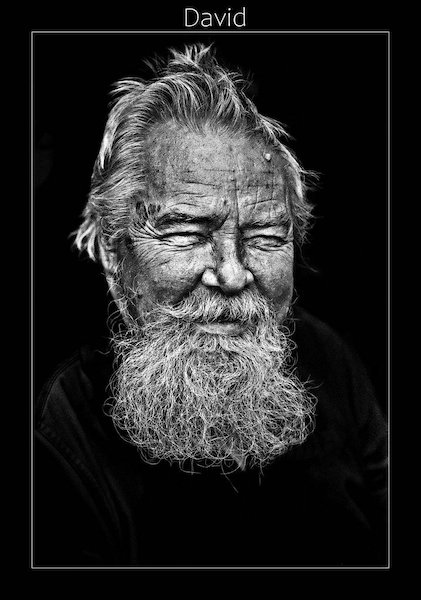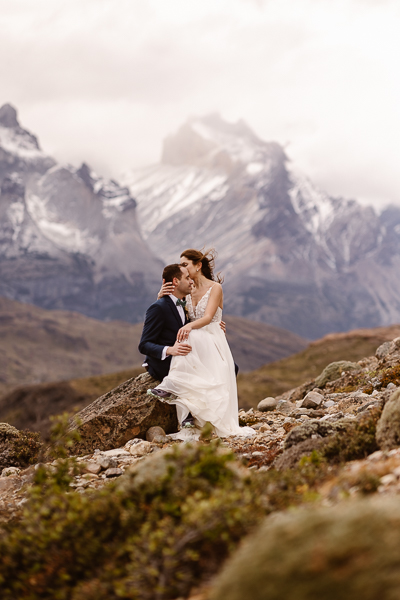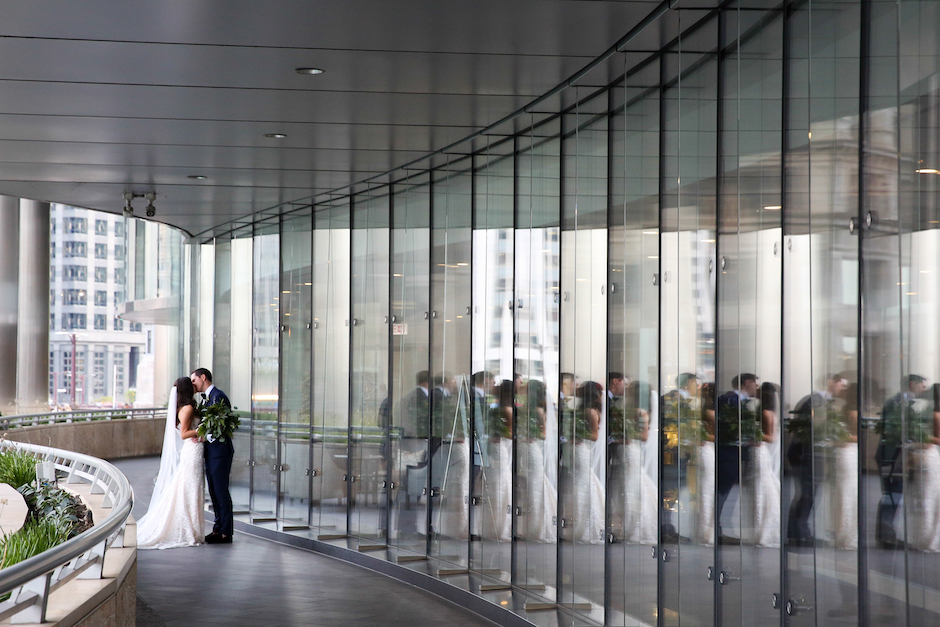The Model’s Photographer: Peter Hurley
February 19, 2013
The secret to taking an epic headshot isn’t lighting or technical skills. According to legendary headshot photographer Peter Hurley, it’s about making subjects feel comfortable enough in front of the camera that they let their “juice shine through.” “Every single person has a natural beauty,” Hurley explains on a recent afternoon in his bustling New York City studio. “When you can get someone to behave like the camera’s not there, that beauty comes out.”
Although Hurley is an expert portrait photographer with a mountain of credentials, it’s his natural charisma that has made him a star in the industry. Tall, handsome and genuinely nice, Hurley has the sort of All-American appeal that landed him jobs as a model for Polo Ralph Lauren and Abercrombie & Fitch in the 1990s. He’s like the dreamy guy in high school who, despite being in the popular crowd, sits with the nerdy kids in the cafeteria.
Hurley grew up spending his summers in Mantoloking, an idyllic town on the Jersey Shore. It was there that he first developed a passion for sailing. By the time he graduated from Boston University in 1993, he was so adept at the sport that he won the national championship, and began training for the 1996 Summer Olympics in Atlanta. Although he didn’t qualify for the National Team until the Sydney Olympics in 2000—as the fourth spot in a sport in which only the top seed gets to participate, and he unfortunately never got the chance to sail for a medal—his sailing career led him to a chance encounter with a designer for Donna Karan. The sister-in-law of a neighbor in Mantoloking, she caught sight of him one day on the water. Impressed both by his skills and his rugged handsomeness, she sent photographs of him over to Polo, which at the time was looking for talent for a summer sport ad campaign. Hurley landed the gig.
While shooting the campaign, Hurley met Bruce Weber, the photographer hired for the job, who later became a friend and mentor. It was Weber who first told him to pick up a camera and start taking shots. “Bruce would joke and say, ‘Peter, I think you’d really like to take pictures of yourself,’” he said. “But he really stayed on top of me about getting that camera.”
For a while, Hurley resisted his calling, focusing instead on his modeling career. “I was that model, actor, bartender dude,” he says. “I lived in a fifth-floor walk-up in New York.” In his free time, he began shooting pictures with a Nikon FE2, which he bought at a used camera store on 17th Street in Manhattan. “I didn’t know what I wanted,” he says. “I offhandedly told the salesman I wanted to shoot portraits, so he suggested I get a 100mm lens to go with it.” The lens ended up being the wrong choice—“I had to jam myself in the corner of a room to capture an entire face”—but it taught him some valuable skills about framing a tight shot that he would use later in his career.
Hurley’s first subjects were his wife (a Venezuelan model), and the American flag, which had long held his fascination. “Bruce would always ask me, ‘why are you shooting flags?’ ” he laughs. “I think I just felt very patriotic because of my sailing career.”
In 2000, he made some money investing through a sailing buddy—“we would go sailing for the day, and by the time we came back in, we had made a ton of cash”—which he re-invested in his budding interest in photography. While visiting Weber in Spain, he bought his first real camera, a Mamiya AS 645. There, he also learned how to work a dark room from Ramiro Montoya, a fashion photographer based in Madrid. Upon his return to the United States, he bought his own equipment from B&H, and set up a dark room in his mother’s basement in New Jersey. “Soon after, the Internet bubble burst, and I went completely broke,” he said. “But I got so much out of the money while it lasted.”
Around the same time, he realized that he couldn’t make a living as a model forever, even though he was doing advertisements for major brands such as Häagen-Dazs —“I got to eat ice cream all day, it was awesome”—and Hanes, for which he showcased both underwear and socks. To supplement his income, he began shooting other models for agencies such as Wilhelmina, which then poached him from Click, the agency that had represented his modeling career for many years. “It was the worst move for my modeling career,” he said, explaining that he stopped getting jobs. “But the best move for my photography career.”
Through another friend, Josette Lata, an art buyer at a major advertising agency, Hurley began shooting still lifes for brands such as Reebok, Johnnie Walker and Levi’s. Before his first job, he called Weber, and told him he didn’t think he could handle the pressure. “Come on, you can do it,” Weber told him, encouraging his confidence as a professional.
Hurley quickly found his niche in the headshot industry, which proved to be quite lucrative. “The photographers who preceded me set the bar high in terms of the price point,” he says. “They created the $1,000 headshot, making the market in New York the strongest in the world.”
The advent of digital photography, which brought a massive influx of amateur image-makers who called themselves professionals, weakened that market. Still, Hurley thrived, thanks to his innate ability to draw out expression from his subjects. “When I look at most headshots, the actors look stiff and blank,” he says. “I call it ‘out-of-touch-itis.’ I want my headshots to look like portraits of celebrities in Vanity Fair or GQ, which are totally bursting with expression.” As a model, Hurley knew what it was like to be on the other side of a camera. “The photographers I felt the most comfortable with, on a human level, always took the best shots,” he says.
Before long, Hurley was shooting portraits not only of aspiring professionals in the entertainment industry, but also notables such as Chris Matthews, Mikhail Baryshnikov and the cast of the television series Lost. His glowing reputation caught the attention of Patrick Hall and Lee Morris, the founders of Fstoppers.com, a website that features video blogs for creative professionals. They asked Hurley to film a short video; it was so virally successful that Hurley, Morris and Hall decided to produce a 4-hour DVD tutorial. Titled “Peter Hurley: The Art Behind the Headshot,” the $300 DVD sold 1,500 copies, effectively making Hurley the go-to expert in his field.
Today, Hurley not only maintains his headshot business, he also writes a blog on peterhurley.com, continues to make video tutorials—a recent one, “It’s All About the Jaw,” has received over 660,000 hits on YouTube—and teaches a workshop called “The Headshot Intensive.” This is in addition to serving as the master of PH2PRO, an online referral engine for over 2,000 photographers, and designing his own line of photo gear called HURLEYPRO, which launched at the end of 2012.
The sailor from Jersey, in essence, has become his own industry.
Hurley’s Portrait Photography Pointers
1. Get the forehead out: Have your subjects thrust their foreheads forward, so that it leads the rest of the face. This will minimize any scrunching in the neck area, and make the subject appear skinnier.
2. Hit their good side: Most people subconsciously know what their good side is, but it might take some coaxing for them to bring it out. A good indicator is that most people part their hair on their best side.
3. Throw a squint: A squint with the lower lids makes your subject look like something is going on in-between the ears. Any “out-to-lunch-itis” shot probably occurred because the subject kept his or her eyes really wide open.
4. Don’t say cheese: From birth, it’s drilled into our heads to smile when we hear the word “cheese.” But the smile looks so fake. Use whatever else you have in your mental toolbox to get your subject to start looking relaxed and happy.
5. It’s not so bad: Before you take the first shot, tell the subject not to look so miserable. That makes them laugh, and gets the good vibes going.
6. The expression is the icing on the cake: The best photographers get every element they want in a photograph, and still capture the essence of the person. That’s what you should be aiming for.
Brienne Walsh is a writer, photographer and art critic. She contributes to publications such as Art in America, The New York Times, ArtReview, Modern Painters, Interview, Departures, NYmag.com, Forbes.com and The Huffington Post.




